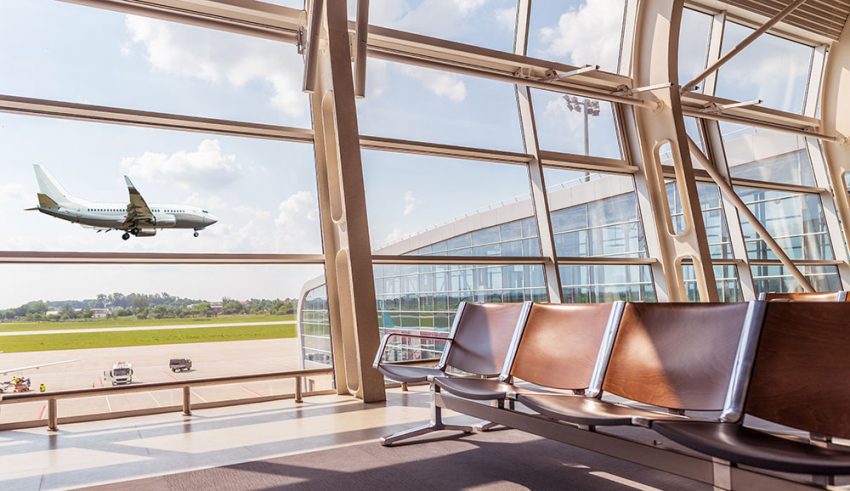
The design of an airport involves all types of professionals, airport consultants, engineers, architects, lawyers, environmental technicians, and all areas of society, from private enterprise to administration and politics.
An airport is composed of several common parts in all of them, which are sized and organized according to the needs of the city they serve, the atmospheric characteristics (wind), orography and available space, as well as the proximity and existing communications with the enclave in which the airport is located.
These common components in any airport are:
-
Terminal buildings or terminal building
-
Parking lot
-
Control tower
-
Hangar
-
Apron
-
Taxiway or approach runway
-
Runway
Terminal buildings or terminal building
The Terminal or terminal building is the “public” space of the airport, it is where all boarding formalities, baggage handling and security checks are carried out. Terminals are usually equipped with cafeterias and restaurants, restrooms and other services such as currency exchange, among many other services designed to serve the traveler before or after the flight. In terminals with heavy traffic, passenger access to the aircraft is usually done directly through gangways.

Parking
Airport parking is the space used for parking private vehicles for passengers and airport staff. In an airport we can find different types of parking depending on the service offered and its distance from the airport, so we can find general parking, valet parking, long-stay parking and others, each with different rates.
Control Tower
The control tower is the space destined to supervise and assist airplanes in the landing and take-off process. The personnel in charge of these air traffic supervision tasks are the air traffic controllers. They observe the aircraft routes by radar and maintain communication with the aircraft pilot by radio; the controllers are in charge of transmitting to the pilot the conditions prevailing in the airport environment such as air traffic, atmospheric conditions (visibility, wind) and the routes to follow in order to land on a clear runway or take off in the best conditions.

Hangars
Hangars are large halls where aircraft are repaired and overhauled. Hangars are connected to the runway by the so-called taxiway.

Apron
The apron is the surface, usually paved, next to the airport terminals, the equivalent of the aircraft parking area. This is where passengers board and alight from airplanes and where baggage is loaded and unloaded.
The overall dimensions of the apron, both in length and width, depend on the air traffic carried by the airport, the distance between aircraft, their size and the operational capacity required for loading and unloading.

Taxiway
The taxiway constitutes all the roads that connect the different areas of an airport such as the terminal, the hangar, and the apron with each other and with the runway.
They are made of concrete and are sometimes paved.
The width and distribution of the taxiways must be adequate to facilitate aircraft turns as they move through the different areas of the airport.
The runway
The runway is one of the most visible and important elements within an airport. Its dimensions (length and width), location and subsequent maintenance must be accurate to ensure its safety for both take-off and landing.
The runway is an elongated strip, usually asphalt or concrete, with a sufficient width to guarantee a landing and take-off in optimum safety conditions. Its dimensions are conditioned by the size of the largest aircraft expected to land at that airport, as well as by the orography and altitude at which the airport is located, among other factors.
At large airports, the runway is well lit for night use and with painted horizontal signs that clearly differentiate it from any road.
As for the design of the runway, it depends on several factors, but the main one is the wind direction. The runway is usually designed in the direction of the prevailing wind; although at large airports several runways are often built to provide safe service to aircraft on days when the wind does not blow in the prevailing direction.










